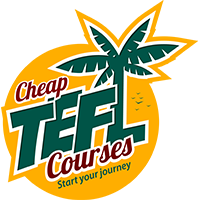
Thinking about teaching English as a Foreign Language to adults and Young Learners? Not sure what to expect? You’re not alone – we’ve all been there.
Because we have some experience under our belt, we can tell you that one of the best things about being a TEFL teacher is the fact that you could find yourself in a range of different classrooms. Think about teaching kindergarten in Shanghai, teenagers in Buenos Aires, businessmen in Istanbul or even teaching English online. As TEFL teachers, we can’t always be picky about who we want to teach and we need to be flexible enough to be able to cope with whatever situation we may find ourselves in, be it teaching adults or Young Learners.
So if you are a bit unsure about what it will be like teaching different age groups, here are 6 differences between teaching adults and Young Learners.

Autonomy
Adult learners are very independent, while Young Learners aren’t. It is possible – and even beneficial – to give adults more autonomy in their lessons. You can do this by letting adults work things out for themselves rather than giving them the answers, asking them to organise themselves into pairs or groups instead of allocating partners, and even giving input into the topics or activities of the lessons. With Young Learners, on the other hand, it is necessary to plan the lesson as you see fit, give clear instructions, monitor the learners closely, and deal effectively with any issues of classroom management.
For example, when teaching adults you don’t need to think about bathroom breaks (they can worry about that themselves!) but with Young Learners you will need to ask them regularly if they need to go to the bathroom. With online learners, you can expect your adult learners to do more while you need to lead your Young Learners step-by-step in whatever you are doing.
Read more: 5 Ways to Make Language Learning More Meaningful
Learning
Another difference between teaching adults and Young Learners is when it comes to learning. In terms of learning, Young Learners need to be given a wide variety of activities which relate to the different senses. Young Learners are sensory learners and respond well to activities which incorporate Total Physical Response (TPR) or similar teaching techniques. Their attention span is also short, so activities in a Young Learner classroom shouldn’t take too much time. With adults, it is possible to spend more time on learning tasks so they can engage more deeply with the learning materials. This means you need fewer activities for your lessons but you can utilise your learning texts more.
As you can imagine, with Young Learners physical activities and games work well, even in the online classroom. If you are teaching a Young Learner 1-to-1 online, make sure you include songs, pictures, props, and energy into your lessons to keep them engaged.
Read more: Top Tips for Teaching Young Learners
Anxiety
Believe it or not, adults are generally more nervous in the classroom than Young Learners. Young Learners seem to have no fear and are willing to try anything – as long as they perceive it to be fun. Young Learners will mirror the energy of the teacher, so you need to be as upbeat and enthusiastic as you can manage.
Adults may feel anxious because of the fact that they are not the age of the “typical” learner and so they will approach activities with a sense of apprehension if they do not feel comfortable. Because of this, they will need more positive encouragement. This can be especially evident in an online teaching situation, when learners may not know other people in the class. There may be times of silence, but don’t let that worry you. Make sure you give your learners plenty of opportunities to get to know one another and feel comfortable with each other and they will soon lose any inhibitions they may have.

Motivation
Having said that, adults are more likely to be more motivated than Young Learners. Adults are generally in the classroom because they choose to or because they need to learn English for work or study, which means their motivation levels are naturally high. Young Learners usually have no choice, which means that they may lose enthusiasm if they are not interested in what is happening in the classroom.
This highlights the importance of tailoring your lessons not only to the needs but also to the interests of your learners. Find out from your learners what they are interested in and plan lessons around those topics. This also relates to homework, as it is more likely for learners to complete homework activities they are interested in.
Read more: How to Promote Motivation in the EFL Classroom
Discipline
Probably the most obvious difference between teaching adults and Young Learners is that of discipline. Teaching Young Learners is all about being able to deal with discipline calmly and effectively. If you’re lucky, you might have a teacher’s assistant or a co-teacher to help you if you are teaching Young Learners in a physical classroom. When teaching adults, disciplines should not be an issue because, well, they’re adults.
When teaching online, discipline can be very tricky. Again it shouldn’t be an issue with adults, and if it is, it’s usually best not to engage with the difficult behaviour and try to move on. The worst thing that can happen is the learner leaves the lesson, which may affect your teacher rating if you are working for a company, but at least you won’t have to deal with the student any longer! For Young Learners, if a learner is acting out in an online lesson, it may be necessary to speak to the parents privately about the situation.
Read more: Co-teaching in the EFL Classroom
Life experience
Finally, the biggest difference between teaching adults and Young Learners is what the students bring to the classroom. Young Learners bring enthusiasm, curiosity, and energy, while adults bring life experience. While Young Learners are still learning about the world around them, adults have already had a lifetime of experiences and have their own ideas and opinions.
With both Young Learners and adults you can use this to your advantage. Your lessons with Young Learners (both online and face-to-face) will be so energetic and lively that the time will pass really quickly, and your lessons with adults will be interesting and engaging for you as well as your learners.
As you can see, though there are a number of differences between teaching English as a Foreign Language to adults and Young Learners, the fundamental practices will remain the same. Encourage communication and authentic language use, utilise your students’ previous knowledge and, above all, maintain a fun atmosphere in the classroom and you will be successful no matter the age of your learners.
Please note: This blog post was originally posted on 16 January 2017 but has since been updated.
The post 6 Differences Between Teaching Adults and Young Learners appeared first on The TEFL Academy Blog.


